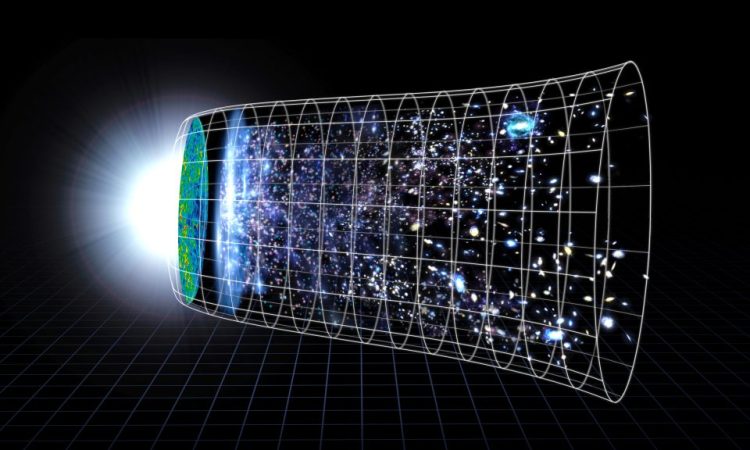
Short answer: no. Imagine the Big Bang as an expansion, rather than an explosion.
Did the Universe expand from one point? It’s one of the questions you ask us most frequently in the comments. We assume that the Big Bang was not an explosion in space. It was a process that involved ALL space. This misconception causes more confusion than any other in cosmology. Unfortunately, many students, teachers, and even scientists tend to mistakenly imagine the “Big Bang” as an explosion that took place somewhere in space, hurling matter outward. Instead, think of it as a loaf of yeast swelling in the oven: the raisins inside are the galaxies.
The whole space was full of energy
In fact, the whole space was full of energy from the beginning. There was no real center for the expansion and no magical point from which matter was hurled outward. The confusion arises in part because of the surprising conclusion that the universe was once packed into an incredibly small volume. But that primordial tangle of matter and energy was not surrounded by empty space. It was surrounded by more matter and energy (which is beyond the region we can observe today). Indeed, if the entire universe is infinitely large now, then it has always been infinite, even during the Big Bang.
To put it another way, current evidence only indicates that the early universe (the entire Universe) was extremely dense, but not necessarily small. That’s why we say the Big Bang took place, not at any particular point in space.
So where did the idea that the Universe was once a point come from?
For much of the twentieth century, astronomers and physicists believed that space might not be infinitely large. That is, they believed that space could actually curve in on itself to form a “closed universe.” This unusual three-dimensional shape was discovered in the mid-1800s by the great mathematician Bernhard Riemann. The shape was later taken up by Einstein for the universe. Such a closed universe would have a finite volume, but without boundaries or edges. Although closed universes cannot be viewed from the outside, they can be viewed from the inside.
For example, in a truly closed universe, you can’t see the back of your head. If you reduce such a space, then everything in it gets closer together, and the volume of the closed universe gets closer and closer to zero. But there is still no place out from space to an observer. Current evidence shows that our part of the universe does not appear to be curved. This tells us that or the universe is infinitely largeor it is so large that we cannot detect its curvature from the small portion we can observe. Just as we couldn’t say the Earth is curved if our measurements were confined to a box!
Read more

